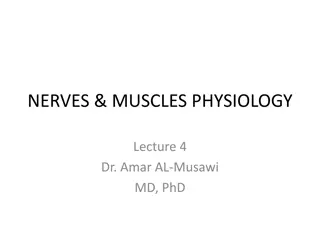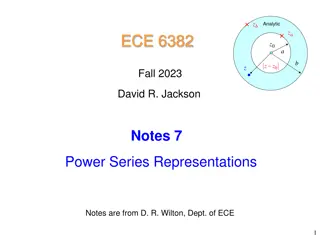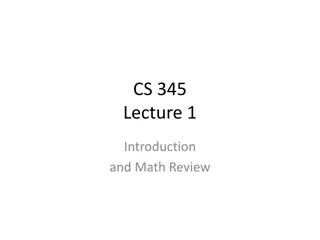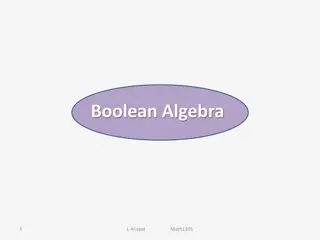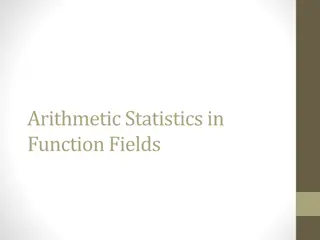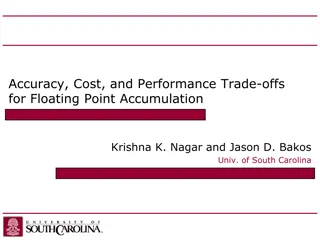Understanding Nerves and Muscles Physiology - Lecture Insights
Explore the intricate processes of synaptic transmission, neurotransmitters, spatial summation, temporal summation, chemical substances acting as neurotransmitters, and the effects of various factors and drugs on synapse function. Delve into the clinical significance of sedative-hypnotic drugs and t
0 views • 11 slides
Understanding the Five Parts of a Classical Argument
The classical argument is composed of five main parts: Introduction, Narration, Confirmation, Refutation and Concession, and Summation. Each part plays a crucial role in presenting a well-structured and persuasive argument, with devices and strategies such as diction, syntax, and figurative language
0 views • 6 slides
Master the Art of Summation Sentences for Effective Paragraph Transitions
Summation sentences play a crucial role in wrapping up body paragraphs by restating the main topic and facilitating a smooth transition to the next paragraph. This essay emphasizes the importance of crafting 3 summation sentences for each body paragraph - academics, athletics/clubs, and student life
0 views • 4 slides
Geometric Series: Power Series Representations & Convergence
Geometric series analysis discusses the summation, convergence, and divergent properties within and outside the unit circle. The series' representation, convergence conditions, and extensions are explored through power series expansions and geometric series summations, providing a comprehensive unde
0 views • 50 slides
Divide and Conquer Algorithm Explained
Divide and Conquer algorithm involves dividing a problem into smaller sub-problems, solving them, and combining the solutions to solve the original problem efficiently. The concept is explained through examples of finding maximum and minimum elements in a set, and a detailed algorithmic approach is
1 views • 22 slides
CS 345 Lecture 1: Introduction and Math Review
This content encompasses the introduction and mathematical review covered in CS 345 lecture 1, including topics such as sets, sequences, logarithms, logical equivalences, and proofs. It delves into sets theory, mathematical operations, deductive reasoning, and examples like the conjecture of even nu
0 views • 68 slides
Understanding Four-Vectors in 4D Space
Explore the concept of four-vectors in four-dimensional space, covering topics such as radius vectors, general 4-vectors, contravariant and covariant components, summation conventions, scalar products, and the components of a general 4-vector. Learn how these vectors transform under rotations and Lo
0 views • 42 slides
Exploring Boolean Algebra: Operations and Functions
Delve into the world of Boolean Algebra, where we manipulate binary values to model logical operations like complementation, summation, and product. Learn how Boolean functions are defined and represented, along with practical examples and logical equivalences. Discover the essence of Boolean expres
0 views • 20 slides
Understanding Arithmetic Statistics in Function Fields
Delve into the world of arithmetic statistics in function fields, exploring concepts like the Divisor function, Dirichlet divisor problem, counting methods, Euler summation formula, and more. Discover the beauty of number theory through the lens of these mathematical functions and distributions.
0 views • 22 slides
Understanding Supply in Economics
Explore the concept of supply in economics, including its definition, determinants, and graphical representation. Learn about the law of supply, non-price factors affecting supply, and key terms such as market supply and horizontal summation. Understand the difference between a change in quantity su
0 views • 30 slides
Understanding Probability Density Functions for Continuous Random Variables
Probability density functions (PDFs) are introduced for continuous random variables to represent the likelihood of events in a continuous space. Unlike discrete probability mass functions, PDFs operate with integration instead of summation, ensuring total probability is 1. Consistency and differenti
1 views • 32 slides
Understanding Histogram Shapes and Distribution Patterns in Statistics
Explore the shapes of histograms and distribution patterns, including symmetric, skewed, bimodal, and uniform distributions. Learn to identify variables that are likely to be uniformly distributed, skewed right, skewed left, or symmetric in real-world data sets. Gain insights into key concepts like
0 views • 55 slides
Trade-offs in Floating Point Accumulation: Balancing Accuracy, Cost, and Performance
When designing floating point accumulation systems, achieving high throughput and accuracy presents a challenging trade-off. Inconsistent accuracy due to data dependencies can lead to significant errors in results. Strategies such as compensated summation or using extended precision adders can help
0 views • 11 slides
